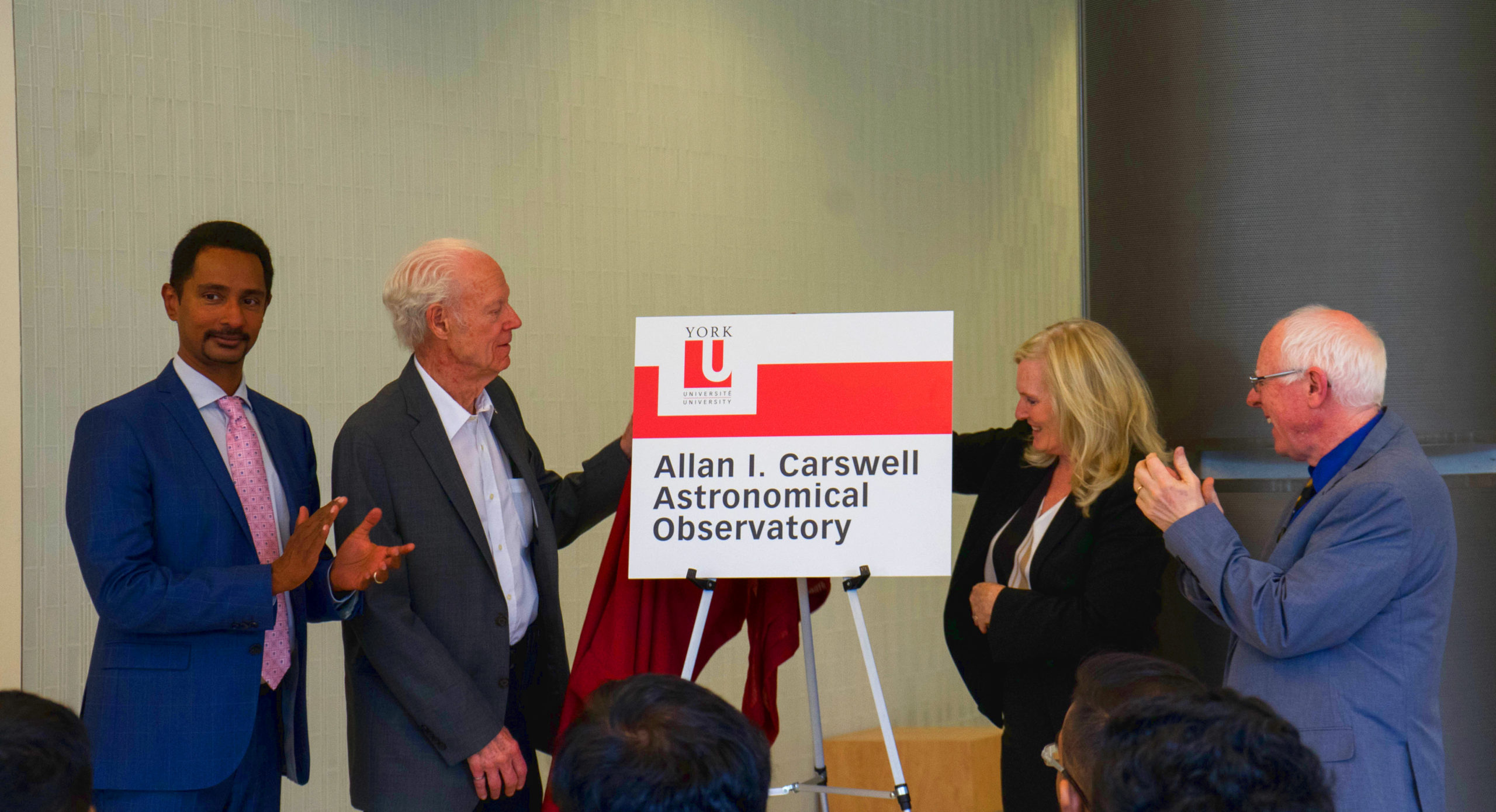Munirul-Haq Raza | News Editor ; with files from Ibrahem Alheyali
Featured Image: Several key contributors were on hand for the announcement of the new telescope. | Vincent Chen
Allan I. Carswell Astronomical Observatory, named after Professor Emeritus Allan Carswell, opened at York on September 14. A donation of $500,000 from the Carswell Family Foundation, which was matched by York for a total of $1 million, went towards a new telescope.
Carswell was a pioneer in early Laser Imaging, Detection, and Ranging (LIDAR), a remote sensing technology that uses pulses of laser light to illuminate targets. He also had the opportunity to outfit NASA’s Phoenix mission with LIDAR technology, which uncovers new information about Mars’ terrestrial surface, as well as knowledge about its atmosphere.
Carswell said the telescope is only one aspect, and all the technology and instruments will allow for the collection of large data. Carswell emphasized the impact of astronomy is not limited to the physical sciences,” but also the Humanities, Social Sciences, and even religion. As astronauts will be going into space and may live on other planets, it impacts the study of human behaviour.
Carswell goes on to say: “One of the things astronomy and space science has—it excites our curiosity.”
Ray Jayawardhana, dean for the Faculty of Science at York says, “We are delighted to be able to expand and enhance the capabilities of our cherished campus observatory with a powerful new telescope.”
Jayawardhana adds that objects can be observed in finer detail—even ones seen before.
Marshal McCall, chair of the York Physics department, explains the significance of the impact that the telescope would have on research at York. “I think probably the most fascinating one is Exoplanets research—the larger aperture allows you to see fainter stellar systems, by seeing small changes in their brightness.”
McCall says: “The other area where we benefit is narrow band imaging, where you put a filter in front of any camera we have and isolate a very narrow range of wavelengths.”
He continues: “This allows you to exclude the background from your detector and then you’ll be able to go to very faint objects.”
He describes the importance of the new telescope’s diameter, speed, and focal ratio: “It’s rather crucial for studying extended sources, things that cover an angle in the sky.”
Jayawardhana emphasizes the community engagement from the new telescope as well. “It’s also about public engagement, because most of it is run by our students, so they’re engaged in running the telescope and open houses. They collect data for their fourth-year undergraduate projects—it very much enriches their experience at York, plus it lets them talk about science with non-scientists.”


